Will the integration of Social Media into TV give the tottering Broadcast giant a well needed injection in the arm, or is it another doomed hybrid?
This pretty detailed post below looks at twenty or so of the best offerings that glue TV and Social Media together – whether its live chat on the TV screen or playing a game on your laptop/mobile/games console in sync with the TV show here are most of the already existing services in this space. We have seen two key audience behaviours happen in the past 3-4 years that change the status quo – TV on one screen, social media on the other.
UPDATE: The Guardian UK did an follow-up interview with me in reference to this post. The article by Mercedes Bunz is called The X Factor marks the start of TV becoming social – “Emerging media producer Gary Hayes discusses the Twitter buzz around shows such as The X Factor and its implications for TV’s future”
Firstly the increased use of social media real time, communication tools (such as Twitter, SMS and Skype IM etc) means there is now a growing roar off in the distance. The viewer back channel, real time social chatter, “did you just see that”, “I don’t agree with what he just said” and most worrying for broadcasters “I’m not going to watch this again. Agree?”.
Secondly we see more and more formulaic TV grace our lounge and Online TV screens – meaning it is less critical to pay attention as it used to be. The narrative arcs of the 5th cop show on that evening are very predictable and the fleeting ‘actual content’ moments in the latest reality talent or cooking show are telegraphed by dumbed down presenters. We now know when our attention is required, especially those inciting moments when emotion or serendipity may be possible. So with these two things happening there are a growing number of services trying to glue the two – either bringing the TV to the back-channel or layering the back-channel ‘over’ the TV. This is something back in the zeitgeist again and likely to appear in many conferences around the world in the next few years.
It is that only now, after years of experimental services going back to the 50s, that true ‘remote’ social interaction alongside the TV can finally be realised. The main SAD (Split Attention Disorder) challenge remains though for keen ‘interaction or social media producers’, trying to develop services that run in parallel and in real time alongside TV, that with scheduled live TV the audience are often focused on the content itself. Unless they have ‘live pause’ (as in TiVo and other PVR systems), anything that takes ones attention away will mean forever missing that moment. Integrating live video (aka TV) into a ‘story focused’ work means some heavy technical, synch, lifting, but the services and tools available to them have and are changing as well as the evolving business model opportunities in being ‘connected’ in real time to your audience.
I have covered part of this topic on and off for the past 4 years on this blog, in various presentations and in fact a long time before that when I was presenting across the globe as senior producer of BBC Interactive TV (more at one of my old sites garyhayes.tv) – of which many services were in fact ‘social TV’ by implication. Millions of ‘users’ interacting with the show and each other in real time ON the TV screen. But I say part of the topic because efforts so far (including my own) to really integrate group or social activity alongside traditional ‘broadcast, appointment-to-view’ TV have been pretty superficial and left wanting. In fact a lot of ‘old school’ red button interactive TV companies I connected with when I was heading up BBC liaisons with them in the early noughties – are now transforming themselves and digging deep into those SocNet APIs and layering them into the same ‘tv widget’ based apps.

PS3 Home Social TV and Film Areas
This post looks at several services in this area (I have covered off TV & marketing inside social game platforms before a few times!) and at the end a contextual presentation that has many examples of Social TV delivered via web browsers. Firstly one of the whys? Why do we need to socialize the traditional TV ‘set’ experience, a quote from News Corp’s COO Chase Carey
“We have an ad-supported business model that doesn’t work. We need to get value for our great event product like the NFL and ‘American Idol’,” Carey said. “We need to build new distribution models in a digital world that generate real value for our product.”
Many broadcasters now realise that communities around their shows make real economic sense. Communities sticking to the online presence, talking about the shows in 3rd party networks means at least a good usuable number coming to the first airings & watching ads. IBC is one of the more pioneering exhibitions/conferences in this space and a great report from AtlanticFreePress featured many of those previously mentioned companies falling over themselves to demonstrate the ultimate middleware to bring social into the TV set. In their item called Social TV — Convergence is Coming it quotes Koen Swings, CTO & Managing Partner Zappware referring to their Social add-ons
“Social networking has been a buzz word in the past few years, in particular on the internet. With these extensions to our EPG, VOD and PVR products, we now extend social networking from the PC domain to the TV domain, because we are convinced that there is no better environment for sharing TV experiences than the TV itself. In a world, in which people are continuously seeking to connect and in which consumers are willing to embrace new technologies that allow them to connect better and more often, these social networking features on TV will be highly appreciated by viewers. Operators that include these features in their iDTV offering, will be able to offer their subscribers a cross-platform social networking experience, hence adding value to their triple or quadruple play offer and resulting in increased subscriber loyalty.”
THE SCREEN PRODUCERS ASSOCIATION OF AUSTRALIA CONFERENCE
This post was also motivated by a panel I am speaking at and producing at the Screen Producers Association of Australia Conference next week ‘Reaching Your Audience’. My panel is on the 360 Track and looks at many of the new hybrid TV forms detailed in the rest of this post.
360—Social IPTV: Internet Protocol or Interactive and Personal TV? Weds 10.30am
TV is in major transition where it is evolving from just scheduled broadcast to being always-on, participatory and social. Its traditional audience is now fully engaged with Social Media and here they effectively become ‘programme’ and content makers for each other but, in the backchannel, they still drive conversation around traditional, compelling broadcast content. There are many challenges ahead and this session will look at innovations across broadband and IPTV, latest business models, new advertising models and latest video web 2.0 mash-ups.
We will also try to answer questions such as, is IPTV a valid platform for video producers? Where are the opportunities across on-demand platforms and is the old advertising model really broken? Is audience contributed online content sustainable at scale and what are the challenges of broadcasting and delivering on-demand? Is there a role for a public service broadcaster in a commercially driven IPTV landscape. IPTV used to stand for ‘Internet Protocol TV’ but in today’s Social Media world perhaps it really means Interactive and Personal TV.
Session Producer:
- Gary Hayes, Director of LAMP, AFTRS & CCO of MUVEDesign
Speakers:
- Arul Baskaran, Acting Head of Multiplatform Production, ABC
- Courtney Gibson, Dir. of Programmes, Southern Star Entertainment
- Lisa Gray, Head of Content, The Feds
- Marshall Heald, Head of Online, SBS
- Siobhan Mulholland, Creative Director, Dubz.tv, UK
(UPDATE: Added above the intro slides to the Social TV panel and below some classifications – as the result of a couple of interviews on this topic needing some breakdown!)
Social TV has 7 simple classifications
- MULTITASK: The live social conversation takes place in 3rd party software like Twitter, Facebook or SMS, alongside the show but on other remote devices (mobile or laptop) & without the video element next to the chat
- EMBEDDED: The social conversation stream is aggregated in 2D panes, alongside the actual video show either on the main TV screen or PC/mobile. Various widgets control your view and what elements you see – the show is pulled into your network view or you go to it.
- INWORLD: You are represented as an avatar (flat or full 3D character) inside a space and you watch the TV as if you are in a real space with a large shared screen. Extend this to the avatar group, appearing ‘remotely’ actually in the TV show itself example below as a taster of this is BOXi
- RESIDUAL: Shows are specifically set up on advanced TV or online so that you can comment as if its a blog – against the whole show or at various Community Created Indexes (CCIs) within it. You leave thoughts about the show and others come and respond to your annotation and add their own. A threaded, deeper discussion can take place around any moment in the show. This can also be done as group chats in audio, sort of DVD extra director & cast commentary style chats in audio or text around a show for others to follow later.
- MODERATED: There is a filtering of the social element as the show itself is formatted so the conversation is funnelled into the format. Presenter or panel response to the conversation in real time. Shifting the focus away from open discussion to focused around tasks. These will be new formats with potentially hundreds of audience members really feeling they are actively part of a live show. This is way beyond ‘Question Time’ two or three asked by the host, or hidden voting / commenting reality show – this is a new format about to happen!
- AUGMENTED TV: You are there in the same space around a shared screen but it is enhanced. You will all have different layers overlays of the same show but with Augmented Reality viewers (either hold up screens or glasses) you will be simultaneously taking part in any of the 5 above AND communicating with the physical folk around you. An enhanced version of a traditional webTV couple where one is talking about the show on Twitter while the other is on Facebook.
- ALTERNATE REALI-TV: This is where the TV show is both a trigger and an integral part to a broader story environment made up of social networks, physical shared spaces, game places, objects, devices etc: Often called Alternate Reality Games this is where highly social and collaborative behaviour by fans and puzzle solving creatives travel through a web of story – some made by the TV show producers much enhanced by the participatory audience.
BOXi is an interactive quiz show with impressive 3D animations. It is primarily targeted to teenagers, and it includes studio teams from different schools.
Viewers and studio teams answer general knowledge quiz questions, and viewers can win prizes in each episode. The show is hosted by a live presenter.
The teams compete in a live studio environment, while home contestants send answers as SMS messages. The game of home players is set in a 3D animated virtual auditorium, in which each player is represented by a virtual avatar.
I personally think we are still jury’s out in regard to broader single screen social activity, but that in some situations and with the right genre of programming, there could be nothing more powerful as a new form. So below I have pulled together some of the real world services already in this space, with a TV screen or show centric bias, and yes by the time I have finished writing there will no doubt be four more.
(note: I have included links to the key ‘online TV Social’ services at the bottom next to a slide presentation I did on the top earlier this year – these are online delivered TV with a back channel glue or other kind of integration on the same screen).
BOXEE
Boxee is one of the new major players in this arena. Heavily based on linking with friends in your social networks and cross recommendation many are citing as the most robust model. ‘It is a free, open-source software platform allowing users to share information about what they’re listening to or watching with other Boxee users or friends on social networks like twitter, facebook’ – having downloaded and started to use it there are quite a few wrinkles to iron out but with another key principle of aggregating TV content from the web around and onto the TV screen makes a lot of sense.
quick intro to boxee from boxee on Vimeo.
CLIQSET
Because Boxee above, is open source it of course means 3rd parties can come along and integrate social apps into the system and being a 3rd party as such can potentially integrate as many social networks as there are, social networks. Such as cliqset have done here adding nearly 0 to the system.
Real-time conversation is going where it hasn’t been before, your television. Introducing Cliqset for Boxee, an exciting new way to share and interact with your friends and the entire Boxee community while you’re watching your favorite movies, television shows and sporting events in real-time. Cliqset for Boxee lets you start a conversation with people about the show you’re watching, while you watch it, right on your TV or anywhere else you’re using Boxee. Through the power of Cliqset you can also stay in touch with what your friends and other people you’re following.
FIOS TV from VERIZON
A major Fiber Optic TV player Verizon with its aptly acronymed FiOS is typical of many of the IPTV based services cropping up around the world that will allow a whole range of integrated social activities – of course it should being naturally part of the web superstructure (once the walled gardens allow some external data to trickle in!). The widget based ones tend to be a portal to Twitter or Facebook for example rather than something truly integrated with the programming, which the web based, online-TV services tend to be. They will of course have the usual features coming to all ‘connected’ TVs, to be able to watch video from community created content sites including Veoh, blip.tv and Dailymotion – and it then begs the question will the social element, the recommendation elements actually be back with the host ‘sharing community’ ie: the ratings/comments are held external to FiOS. This may be the persistent fly in the ointment for closed IPTV with only a nod to external networks, which may be seen as being more a promotional link back to buying the service than actually adding value.
Twitter Get free on-screen access to tweets from the entire Twitter community. Send and receive tweets about the show you are watching so you’re always on top of the latest buzz. Facebook Sign into Facebook® through the FiOS TV widget to keep up with your friends while you watch TV. Update your status, view new postings, photo albums and more. (Requires Facebook account)
SLIPSTREAM – Bringing Television back to the TV
SlipStream was developed by ‘The Do Lab’ who are one third (a good friend and ex BBC comrade) Jonathan Marshall. To quote their blurb it is a ‘Social Media platform. It integrates broadcast television and radio, on-demand services, personal content and programme metadata with social networks to create personalised, social and shareable viewing experiences.’ The suite effectively turns any basic STB into a very rich feature set Personal Video Recorder. On the Social TV side they are taking the heavy lifting route in that this is middleware that sits on potential any traditional, lower end broadcast, Digital Set Top Box (with an API of course!) but which links in real time to the social network data from the web.
Integration of social interaction around programme content. Allows sharing of ratings, recommendations and personal content with the world at large. Brings social networking to the TV screen.
Yahoo Connected TV
A typical example of internet giants moving into TV space (we all recall Microsoft TV, web TV and others from years ago!). Yahoo’s Connected TV was announced at the big CES show at the beginning of this year and it’s key features are a relatively open API / SDK to allow developers to create 3rd party widgets/apps to sit around and docked to the ‘actual’ TV screen. As well as obvious links to Yahoos own flickr, integration will also include Twitter, YouTube, eBay and MySpace. To quote from the Reuters press release
Ever since the dawn of the Internet Age, tech companies have been promising to bring “convergence” of the online and TV universes, but those efforts have failed to take off with consumers who have found such products difficult to use. The new TVs announced on Wednesday will be in the market as early as the spring and will support widgets — small Internet applications — that run alongside broadcast TV content, but not over it. The applications can be used for a wide array of Web activities, like watching videos on Google Inc’s YouTube.com, social networking on News Corp’s MySpace.com, tracking stocks and sports teams, buying and selling on eBay, messaging friends using Twitter, or using Yahoo’s own photo-sharing website Flickr.
EpixHD
EpixHD has some major studio backing being a joint venture between Viacom, Paramount, Metro-Goldwyn-Mayer Studios and Lionsgate. It looks set to succeed where others (Joost anyone) in the movie on the web space have failed and give some of the incumbants (iTunes?) a run for their money. EpixHD went into Beta in May 2009 and has just launched in October 2009 and is touted as a next-generation multiplatform premium entertainment channel. The interesting aspect for this post are the private screening rooms that look like the traditional cardboard cutouts of real time friends in front of the film. Heres a screenshot, some info from their FAQ and a little grassroots video from Steve Garfield.
How do I invite friends to a private screening? – To use the screening room, click on the movie you want to watch with your friends, then look just under the player. On the right side, you’ll see the “Watch With Friends” button. Click that and you’ll be magically transported to the screening room and get a pop-up with a link. Copy and paste that link, and give it to your friends. Feel free to use the links on that page to easily share with Twitter, AIM, email, or Facebook. Invite up to 4 people…Once they click on it, they’ll join you in a private screening room, and you’ll be able to play and pause the movie. And if you want to talk, you can. Just don’t blame us if your friends tell you to shut up and watch the movie.
Heres prolific vodcaster Steve Garfield showing EpixHD off a few days ago
SKY/XBox Live
It is an obvious step to bring Sky TV onto the XBox games platform (much the same as various broadcasters are bringing their channels to Sony’s PS3), the platform has an already existing online community that can bring their ‘energy’ around Pay-Per-Group-Play TV content, especially sports, initially. The interesting aspect of this is the intentional virtual social interface set-up as a core feature. The PaidContent:UK site covered this and highlighted the way Social TV has been integrated
One cool new feature Sky will get: a genuine online community. Sky viewers will get IM chat, friends lists and Xbox Live avatars, but MSFT has also created a new on-screen virtual sofa for those avatars to sit on, together with friends, during football matches. It will let viewers’ alter-egos goad fans of opposing teams or cheer a goal. While the interactivity looks to be limited to live sports so far, both parties say there’s more to come on the social side.
“Xbox product manager Jerry Johnson gave paidContent:UK a demo of Sky’s new live and on-demand social TV service over Xbox Live”.
CLIPSYNC
Clipsync are actually the underlying technology behind several of the services featured here (Epix, CBS, TV.com etc). They bring the basic capability for remote individuals to come together as groups to be represented as avatars or text fields watching simultaneously streamed content. They have a vision and one area of their site I found interesting was their mini history of social TV
TV started as a social activity; families would watch together around their single TV set. They would discover shows together and comment on shows in a synchronous viewing experience. However, the TV became a common household item and watching it was less of a family, or social, activity. The Internet separated the social aspect of content even further. Streaming video was brought to people’s laptops and computers on an individual basis.
As content was made widely available to viewers on their computers and laptops, personal devices began to proliferate. One trend in social TV is that content is being accessed by consumers when and where they want. In 2007 broadcasters and content owners realized that the old method of content delivery would not work. They embraced the Internet as viewers adopted their devices as their main source for content.
During this time, the social aspect of TV was largely lost. The shared experience of TV was delivered by way of comments and asynchronously viewed content. Viewers could watch clips and share them with their friends or read comments left by other people, but real-time interaction was largely ignored.
ClipSync is leading the re-emergence of TV as a social activity – the Social TV revolution. Viewers can create, share, comment and react to content in real time, only in a time and place of their choosing. Viewers now have control of their content and the benefit of social interaction. This phenomenon is connecting people, content and advertisers like never before, with ClipSync leading the revolution.
CBS Watch and Chat
The broadcasters themselves have obviously been making moves with various catch-up TV players embedded on the web. My presentation slides below have most of the UK, US and Australian ones included as examples. But not many have activated synchronous social widgets around the streams or more complex shared annotation, recommendations features. It wouldn’t be hard to implement of course but CBS have jumped the pack and introduced group viewing options with CBS Watch and Chat which is really Social catch up TV.
Watch episodes of your favorite shows while you chat and LOL with friends and fellow fans. Boo the latest villains on NCIS and CSI: NY at the same time, LOL in unison at the same crazy antics on How I Met Your Mother and Gary Unmarried and toss tomatoes at your least favorite Survivor. Hop right into one of the rooms below, invite your friends and start socializing!
TV Chatter
 I have show plenty of TV or web TV examples so far and as we know a great deal of social interaction around the TV is also via smart mobiles. I personally cannot watch TV now without my trusty iPhone keeping an eye on tweets or checking out IMDB ocassionally. So tvChatter is an interesting free application for the iPhone and iPod touch that
I have show plenty of TV or web TV examples so far and as we know a great deal of social interaction around the TV is also via smart mobiles. I personally cannot watch TV now without my trusty iPhone keeping an eye on tweets or checking out IMDB ocassionally. So tvChatter is an interesting free application for the iPhone and iPod touch that
presents real time Twitter-fueled commentary about your favorite TV shows. Watch your show on your TV or PC, launch the tvChatter app on your device, choose the show from the social program guide, and watch the streaming commentary text. If you have a Twitter account, you can post your own comments, reply to others or filter on your followers for a more intimate conversation.
ABC Social: Episode Commentary
Hot on the heels of CBS and launched only a few days ago comes ABC Social: Episode Commentary. Being geo-sensitive I haven’t been able to really try the service but it allows people to add commentary tracks to any ABC episode already available on ABC.com. As well as Community Created Commentary (CCC) there will be the traditional DVD type commentaries from set designers, actors, directors etc:. But its real social impact will be doing a commentary and then sharing with your friends, who will then add their bits and pass on. It is integrated with Facebook connect so we all might start to see those annoying ‘Susan has created a commentary for the V Pilot on ABC Social’ messages popping onto our walls. Groan 🙂
TV.com (powered by ClipSync)
TV.com is a rather traditional web based service, again linked with Facebook connect and where you can be a participant in producing the actual show guides, for friends and strangers. One of the more mature aspects of the service is the ‘social credits’ you get by contributing to the service – one of the true motivational elements of services like this.
After you register, you will start getting points. Pretty much everything gives you points – even just visiting the site! – but the biggest totals come from adding episode summaries, writing reviews, posting to forums, blogging, filling out your profile and adding friends. As you get more and more points you will reach higher and higher levels. There are over 100 levels to reach, and the higher the level the more awesome bragging rights you have. Get enough points and you might even become the Editor of a show. As you go, you will also collect cool profile emblems that mark your contributions to the site and your participation in special events.
iTweeVee
iTweeVee is a “SocialTV application to be used to have a conversation about your favourite shows. Review whats been said and tweet with your friends about TV.” This is pretty new and is more or less a reskinned Twitter, made to be very TV show centric. Laurel Papworth covered this in some detail in a ‘sticky’ post on her blog and here is an excerpt from that Twitter Plus TV Equals iTweeVee
“We’ve talked a lot about back channel Twitter and TV in the past, but this is an interesting implementation of a social network tool to support a naturally occurring grassroots activity. Sometimes the stuff we offer to the customer communities based on what they are doing is more powerful than being all creative and dramatic about finding solutions for unknown problems.”
CollaboraTV
This falls into one of many studies into this space and a white paper and associated technology thinking is available here. CollaboraTV is primarily a group watching system that allows individuals in the group to annotate, gesture and leave a trail of their ‘views’ for others to pick up later. This can really work (and it sounds awful in theory) if the person who left the trail is a trusted family or friend and you ‘really’ want to see what they thought at various points. Like other real time services too in CollaboraTV, the virtual audience appear as silhouettes in front of the screen, the back of the head brigade, simulating a movie theatre situation – again takes a bit of getting used to!
Partly to blame is the increasing prevalence of Digital Video Recorders (DVRs), sales of which are expected to empower 250 million users by 2011 (ABI, 2006). Primetime shows used to bring families together. Now, and especially as more DVRs gain the ability to record multiple shows simultaneously, family members are opting to watch content based on their particular interests, often separating them from family. Compounding this problem is the volume of content catering to different interests and demographics on TV today. The number of channels available to the average household grew from 18.8 in 1985 to 100.3 by 2003 (Nielson, 2004). The sheer quantity of content makes it less likely for people to watch the same shows. Our study shows that users understand and appreciate the utility of asynchronous interaction, are enthusiastic about CollaboraTV’s engaging social communication primitives and value implicit show recommendations from friends. Our results both provide a compelling demonstration of a social television system and raise new challenges for social television communication modalities.
Other fairly recent TV centric social TV services, research, demos andtrials worth investigating
- AmigoTV: a social TV experience through triple-play convergence
- Media Center Buddies: Instant Messaging around a Media Center
- AOL Television
- Telebuddies: Social Stitching for Interactive Television
- Motorola’s Social TV
- AMUSE 2.0, the project on Interactive Mobile TV!
I have put this slideshare show in a previous post but it is appropriate here to cover off any areas I may have missed above. This looks more at the key web, browser, based services which as is implied above, does it really matter now that the ‘live linear video’ element of TV is on any of the four screens (mobile, PC, lounge or shared outddoor / cinema)? The point is what applications sit around it to enable community and social activity.



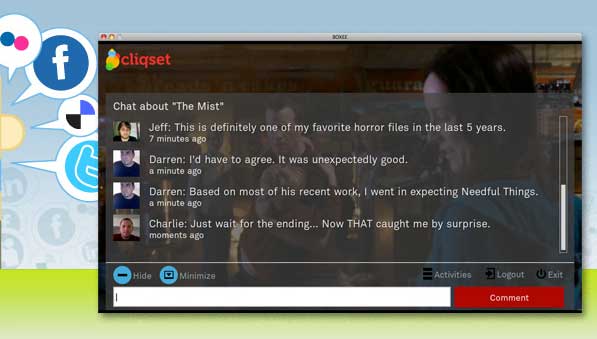


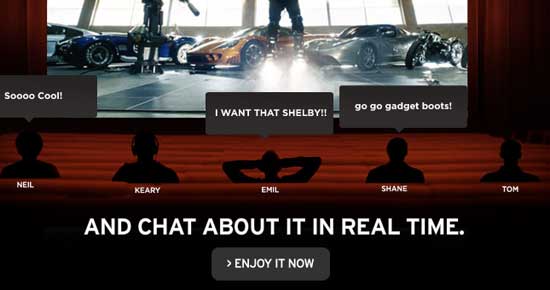



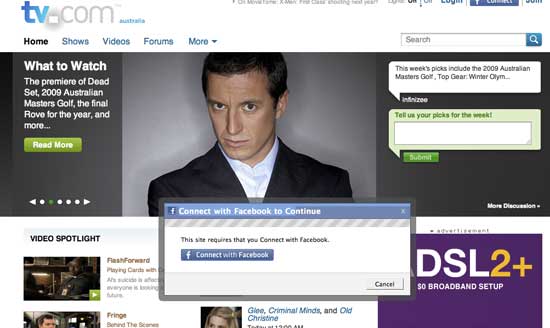
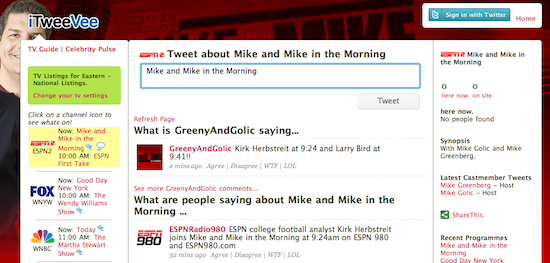
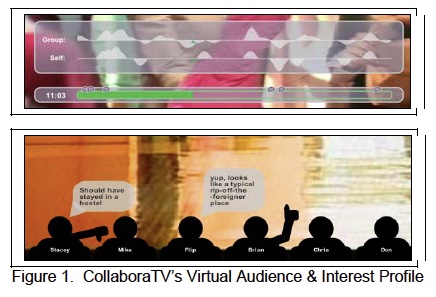


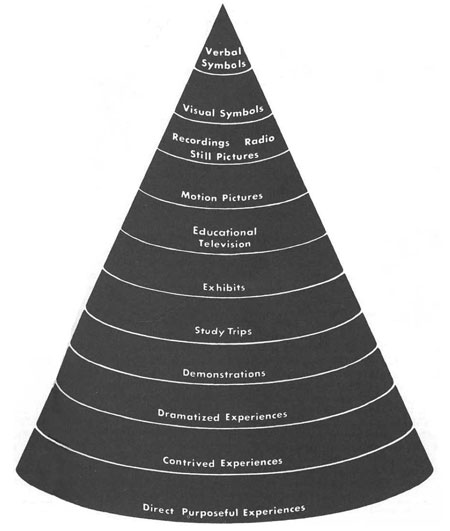
Gr8 post 'Social TV Reloaded" – Lots of examples of integration of Social Media around TV twurl.nl/se53hc
RT @northrunnnercan How the Web is Changing the Way We Watch TV bit.ly/ZviYr paid article?! or my free one twurl.nl/icxg2q
@GaryPHayes Thanks for the time spent in an awesome(2me) summary of what's up with social TV twurl.nl/icxg2q
Good recap. Yes, we’re seeing social media converging with TV, and we will also see ‘Made
For Social TV’ content. Please join our Social TV group at SocialTVGroup.com/ We are also arranging for Social TV professional meetups with panel discussions across the US as well. meetup.com/SocialTV/
Paul Farkas
Social.TV
Thanks Paul – have joined.
Hi Gary,
Great post
how do you think FreeMantle’s new sunquizlive.co.uk fits into all this?
Best,
James
really, it is very interesting to see the trend moving towards watching tv shows online. I cant wait for virtual reality !
Gary –
Incredibly awesome post, packed with good information. At a high level, one of the biggest things we’re seeing here is that people want to be socializing around TV programming, and they’ll go to great lengths to make it happen, even if it’s with ad hoc methods. So it’s great to see more formal solutions popping up to get out to the users.
We’ll see where it goes!
Hi Gary,
Great post from 2009 this is!
I am the bloke who penned the piece at Atlantic Free Press… and have been writing some more lately. Would be really cool to know your opinions on:
What do you think about Connected TV?
agoramedia.co.uk/blog/marketing/a-bright-future-for-iptv-television-2-0/
Or what Google has been doing?
agoramedia.co.uk/blog/open-source-software/google-aims-at-the-tv-market-%e2%80%93-will-they-succeed-yes-and-here%e2%80%99s-why/
We also have a pretty active group at Linkedin with a couple hundred members – you might like to join…
bit.ly/soctv
Best
Richard K.
.-= Richard Kastelein´s last blog ..YouTube Aiming for the Big Screen in Your Living Rooms =-.
Dobry den,
mam zajem vybudovat medium pro sledovani filmu, koncertu,live style a dokumentu na domene www.mickjagger.tv / Rolling Stones a www.blacksabbath.tv / Ozzy Osborne
na vice mediich.
Hledam investora a poradce pro vysilani.
Dekuji za Vas zajem.
Kollinger Alexandr
Prague
I’m all for giving the cable an satellite companies a little competition! I wonder if and when the monopolies of online TV will begin to surface?
I think that the problem all of these sites will have is not the program but the pattern. People, on a global scale, are not accustomed to watching video at length on their computer. Once the TV gets more integrated, meaning that we see Internet content on our TV very clearly, these sites will all increase viewership drastically and the best will win out.
My thoughts,
Richard
Great post Gary! I hadn’t realized until reading this how much social media has been integrating into TV. iTweeVee just cracks me up. Thanks for sharing this.
RT @garyphayes Social TV Reloaded | PERSONALIZE MEDIA bit.ly/fsYwx
Social TV Reloaded – 20 Best Solutions by @GaryHayes www.personalizemedia.com/social-tv-reloaded/ via @PaulFarkas
RT @renatefischer: Social TV Reloaded – 20 Best Solutions by @GaryHayes www.personalizemedia.com/social-tv-reloaded/ via @PaulFarkas
Social TV Reloaded | PERSONALIZE MEDIA bit.ly/4AVTRq #socialnetworking
The largest tv network on the internet has been lunched. its the network that contains every part of internet activities. chatting, forum, blogs, watch full movies, download movies, watch trailers, episodes, alert birthday, news, adult toons and children cartoons, musicals, its a free sign up and you can upload your own video for your marketing or otherwise.
Social TV Reloaded | PERSONALIZE MEDIA bit.ly/4AVTRq #socialmedia #smm
Social TV Reloaded – 20 Best Solutions www.personalizemedia.com/social-tv-reloaded/
Social TV Reloaded: 20 Best Solutions ow.ly/3enKb A Very Detailed & Informative Article ^SP
RT @Vidrollr: Social TV Reloaded: 20 Best Solutions ow.ly/3enKb A Very Detailed & Informative Article ^SP
RT @garyphayes: Social TV Reloaded – 20 Best Solutions t.co/KySAMI6
RT @garyphayes Social TV Reloaded – 20 Best Solutions currently available t.co/KpLPblW #convergence
Ah Social TV days before Dual Screen (tablet +) TV 🙂 Archive: RT @garyphayes: Social TV Reloaded – 20 Best Solutions t.co/zDH4NLao
Archive: : Social TV Reloaded – 20 Best Solutions t.co/ozeaeJ83
Archive: : Social TV Reloaded – 20 Best Solutions t.co/ozeaeJ83
Archive: : Social TV Reloaded – 20 Best Solutions t.co/ozeaeJ83
Hello Guys,
Hope you are all doing great and fine
I’m searching the best IPTV Service.Add I’ll see your site.
Thank you so Much